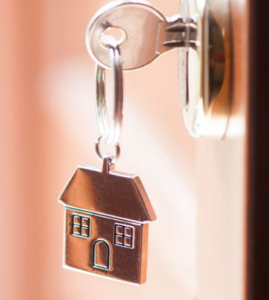Buying a new home is a great joy for anyone, but it is not without risk. The decennial insurance acts as a guarantee of protection against the most serious.
Next, we explain everything you need to know about this essential policy to be able to claim some damages and damages that your house may have.
What is a Decennial Insurance?
The decennial insurance, as its name suggests, is a policy that protects and guarantees that the owners of newly built homes are compensated for the material damage suffered by their building for ten years due to the construction itself (not motivated, for example, due to subsequent reforms).
Or that affect the structural elements (those that keep the building standing, such as slabs, pillars, load-bearing walls and beams), as long as these deteriorations compromise the strength and stability of the home. It is not enough, therefore, that there is damage to a beam, for example.
But that this damage may pose a real risk of total or partial collapse of the building. This insurance guarantees.
Therefore, the safety of the inhabitants of the houses against damages that have their origin in errors when building the structure or in problems of soil settlement, which affect the foundation.
But not the damage caused by the deterioration of houses due to the passage of time and use.

How does Decennial Insurance Work?
It has double protection, as it defends both the real estate developer and the owners of the homes it has sold, so that the insurer is liable for damage to new homes, directly compensating the buyers.
The owner of a home has to know, of course, that there are a series of deadlines to be able to claim from the promoter the repair of the damages that he appreciates in his house:
Up to 10 years for damages that affect the foundation, the supports, the beams, the slabs, etc. (those that we have already mentioned as structural elements of the building). They are very rare, but serious and expensive.
Up to 3 years to notify defects in the so-called construction elements (windows, non-load-bearing walls, floors, ceilings…) and facilities that do not meet habitability requirements (such as bad odors, defective soundproofing, humidity persistent or problems with the boiler, among some of the most common).
1 year for damage to finishing elements or completion of the work, such as raised platforms, doors that do not close, chipped paint, dripping faucets, etc.
They are the most common damage when entering a new home, but also the easiest to repair.
These minimum terms are actually the responsibilities of the builder of the work, who must provide buyers with guarantees of the durability of the different elements.
However, the ten-year insurance is the only mandatory one and refers exclusively to damage to the structure of the building, which has a ten-year guarantee.
Although the owner also has to take into account that there are complementary guarantees whose duration is different depending on the insurer, such as waterproofing coverage for roofs and facades that are usually 3 years.
An important piece of information when claiming within the stipulated time is to bear in mind that these terms do not begin from the time the buyer acquires the house, but from the time the promoter signs the receipt of the work by delivery from the builder.
Who needs this Insurance?
Any developer company or private person who is going to carry out a construction work for third parties needs to take out mandatory ten-year guarantee insurance to cover defects that may appear in the work for 10 years. In many cases, the promoters hire Technical Control Offices (OCT).
Which are engineering and/or architecture companies, to control and supervise the different phases of project execution.
And which prepare a report on the quality of the construction that It serves the insurer to know what is the real state of the work that it is going to protect.
In fact, most insurers do not accept risks if the work is not supervised by an OCT. However, it is possible to contract a ten-year policy without OCT, such as when the work is already finished and the technicians have not been able to supervise the entire construction process.
Of course, not many companies are willing to assume these risks and the price of insurance is usually higher.

Is it mandatory to have a Decennial Insurance?
As we have mentioned before, it is mandatory insurance only for residential buildings, so the promoter of these must contract it, without the possibility of canceling it before the 10-year term expires. In fact, if you do not have this insurance, you cannot register the new work in the Property Registry.
So you could not obtain mortgage financing or sell the homes. However, it is not required when a self-developer builds a single-family home for his own use.
What happens is that, if you decide to sell that house to a third party before ten years have passed since you finished building it, you must take out decennial insurance for the time remaining to complete the ten years.
For the rest of the buildings that are not residential (offices, hotels, shopping centers…) this insurance can also be taken out, although it is not mandatory.
In these cases, the entire building complex is guaranteed, which together with the foundation and the structure includes other elements such as exterior walls, secondary work, equipment, facilities, etc. for damages that affect its stability, but also expenses such as demolition or debris removal in the event of a large-scale accident.
What are the Coverages?
The minimum basic guarantee that the decennial insurance includes is that of structural damage.
This means that the buyers of the houses are compensated or the material damages due to defects or defects of origin are repaired, when the building was being built (due to the settlement of the land, in the floors, the beams, poor condition of the pillars …) for a period of ten years.
There is the possibility of contracting a longer warranty to make this coverage last longer.
This minimum coverage can include other optional ones, depending on the level of protection that the promoter wants to have, such as waterproofing of facades and roofs, waterproofing of basements or protection of pre-existing assets (that are part of the original work) in case of reform.
It must be clear that this insurance only responds when it is the structure that is compromised and acts solely on it. Taking this aspect into account, we are going to list some aspects that are not covered by the decennial insurance:
- Damages of the owner inside his house or of third parties.
- Damage to personal property inside the home.
- Loss of rent or the inability to inhabit the home.
- Damages due to reforms or works carried out on the property after its purchase.
- Damages due to misuse or poor conservation and adequate maintenance of the property.
- The amount allocated to the conservation and maintenance of the property from its sale.
Damages due to an explosion or fire, unless it is proven that they were caused by defects in the initial execution of the work.
Losses originated in parts of the work on which there are reservations, that is, problems detected that must be corrected.
Advantages of this Insurance
This insurance provides peace of mind to face any expense in the event of damage to the structure of the building, since it is the insurer that assumes compensation to the new owners or repair works.
For buyers, therefore, it means a true guarantee for ten years, since in the event that the home they have bought has construction defects or the materials are not of the agreed quality, they will be compensated at no cost to them.
In addition, it simplifies the resolution of claims without entering into long judicial processes to define responsibilities among those who have participated in the construction, since it is very clear that the person responsible is the promoter and is responsible for the damage to the building with his policy.
And although the claims covered by the decennial insurance are not very frequent, they are very serious.
So the cost of repairing these damages can be a huge expense for the construction company, which is why this policy is of vital importance for the developer.
Another of the great advantages of this insurance is its price, since it is low, and does not significantly increase the cost of the work (around 0.55% of the total value in building homes and 0.70% in single-family homes).
The insured capital must comprise 100% of the final cost of the work (which includes the building and, where appropriate, the urbanization) and the declared value per square meter cannot be less than 390 euros for a house in a building.
Which rises to about 420 euros in semi-detached houses and 520 euros in individual houses. All in all, the final cost of the insurance will not only depend on the type of home.
But also on the completion date of the work, if it has OTC, the value of the construction, its location and the optional coverages that you want to include in the policy. .